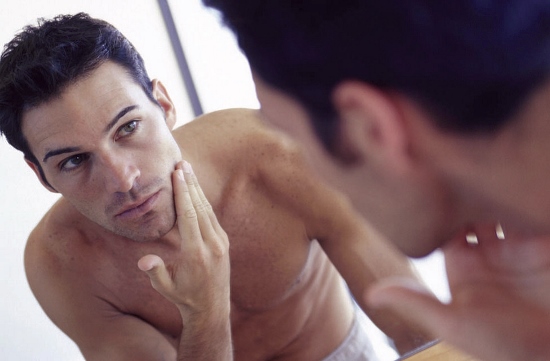02 Jan Complexion Anxiety: How to Smooth Your Worries Away, Options Abound

With so many options to improve the tone and texture of your face, no one should be apprehensive or self-conscious about his or her appearance. Chemical peels and laser resurfacing are two skin rejuvenation treatments that you may want to consider.
What is a chemical peel?
A chemical peel is applied to the skin to remove the damaged, outer layers so that new, regenerated skin can replace it. This skin resurfacing procedure is used to treat wrinkles, skin discoloration, and scars.
Your skin has two layers, the epidermis and the dermis. The epidermis is on the surface. Underneath is the dermis, composed of long fibers called collagen that stretch and relax with age and sun damage. The dermis also has two layers, the papillary layer (upper) and the reticular layer (lower). The papillary layer can heal from injuries without scarring.
The active ingredient and concentration will determine how deep the peel permeates. After the damaged layers have been eradicated, the skin works to rebuild the lower collagen and elastin layers of the skin to produce smoother, rejuvenated skin.
Types of peels
A mild chemical solution, such as alphahydroxy, glycolic, lactic, or salicylic acid, gently peels the epidermis and potentially a portion of the papillary dermis as well. It reduces rough, dry skin and produces fresher, smoother skin. These light peels are not a permanent solution and may be repeated on a regular basis.
A moderate peel, e.g., trichloroacetic acid (TCA), infiltrates the epidermis and into the papillary dermis; the results are longer-lasting than a light solution peel. This peel treats sun damage, fine lines, weathered skin, and pigment problems. The chemical may be applied along with a sedative; there may be mild swelling for about a week. The TCA peel is often repeated over a period of weeks for a smoother, fresher looking skin.
A deep chemical peel, such as carbolic acid (phenol), can reduce extensive wrinkling, marked discoloration, scarring, and pre-cancerous growths. It is the strongest of the chemical solutions and causes a deep peel. The treatment requires sedation; application may take one to two hours. The recovery period is approximately two weeks of redness and mild discomfort.
What is laser resurfacing?
Laser resurfacing is also a skin rejuvenating treatment to reduce skin irregularities and facial wrinkles. The method directs short, pulsating beams of light to remove the skin, layer by layer. The light beam can be varied in intensity and pulse duration. The wavelength and power output of a particular laser determines how it is applied medically. Dr. Edds will choose the laser based on what is being treated, skin type and color, and patient expectations.
Types of lasers
Two types of lasers, ablative and non-ablative, work very differently on your skin. Ablative?which means skin removing?lasers produce an infrared light that heats water within the surface layers of the skin (epidermis) causing both the water and the tissue to vaporize. At the same time, the laser heats the underlying skin (dermis), breaking down old collagen and stimulating new collagen to form. New skin that is tighter and smoother forms as the skin heals. This laser can treat more extensive wrinkles and scars, usually with one treatment; however, recovery takes longer.
Nonablative lasers, conversely, have lower energy levels than ablative. The heat of the laser passes through the epidermis with little damage and stimulates collagen production underneath in the dermal layer. The collagen growth may improve skin tone, texture, and fine wrinkles. These lasers usually require multiple treatments?with little or no recovery time?to bring about the desired results. Common nonablative lasers include pulsed dye lasers and nonablative fractional lasers. Treatments with these lasers may be referred to as photo rejuvenation.
Light-based devices, e.g., Intense Pulsed Light (IPL), use flashes of light and are technically not a laser. They are non-invasive and stimulate the dermal tissue to tighten underlying skin and improve skin tone and appearance. Repeated treatments are usually necessary in order to achieve the desired results.
Which treatment is right for you? Make an appointment to have your complexion evaluated. Dr. Edds will discuss your concerns and recommend the optimal plan that is right for you.
Laser treatment options
The following irregularities may be improved through the use of lasers.
- Acne: The laser kills the bacteria that causes it. The laser can also damage the oil glands to reduce oil production. Both methods decrease acne breakouts.
- Acne scars: Removing the top layer allows for a smoother surface to emerge. The more severe the scarring, generally the stronger the laser; repeated treatments may be necessary.
- Fine wrinkles: Crow’s feet, lip lines, etc., can be improved through laser resurfacing.
- Pigmented lesions: Age spots, sunspots, and café au lait spots, for example, can be lightened through the use of lasers.
- Hair follicle stimulation: Laser energy on the scalp stimulates the follicles, reducing the progression of hair loss and in some cases increasing hair density of the finer hairs.
- Hair removal: The heat energy from the laser destroys the hair follicle.


